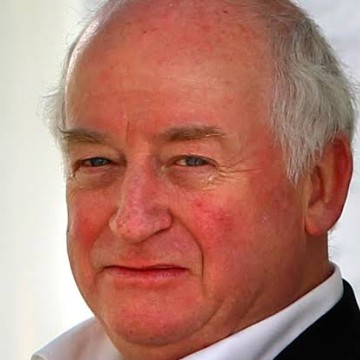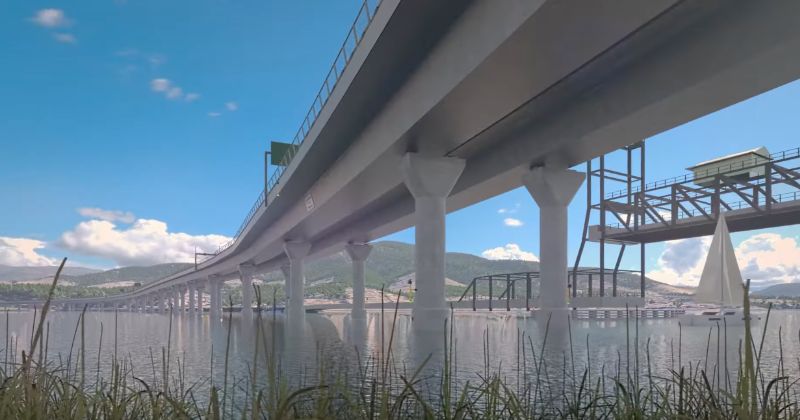QUESTION SUBMITTED TO THE MAYOR & ALL COUNCILLORS The following questions, as submitted to Council on 14 August 2024 by Ray Norman have been answered by Nathan Williams (Chief Financial Officer) and Chelsea van Riet (General Manager Community and Place Network).
CONTEXT
Given the Councils’ commitment to facilitate the development of a housing estate at St Lenard’s bounded by the North Esk to its south and almost to its west that is being marketed as the area that will provide housing sites for the city for decades it is time to engage with the city’s citizens in a meaningful way.
Albeit without lodging a tender for their consultancy, Mesh Planning are the Council officer’s preferred consultants but in Council’s deliberations there was no evidence of there being a community consultation process to determine community aspirations and expectations relative to the ‘placemaking’. This is concerning as is the lack of public exposure for the consultant’s brief.
These two elements would/should be key references that ensure council, and by extension the city’s ratepayers and citizens are receiving value for a significant expenditure. Given the housing crisis communities in Tasmania and elsewhere the expenditure of public monies on planning for housing developments without this class of community engagement is unsustainable.
THE QUESTION
Will Council publish the publish the brief being provided to Mesh Planning prior to Council’s next meeting and ensure that within it there is provision for expenditure to conduct an independent arm’s length consultation process that enables any citizen who wishes is enabled to do so?
Response:
Council is currently scoping the development of a housing strategy as one of its
Annual Plan Actions for 2024/2025. As part of this strategy we will bring an open mind
to how we can do things differently or work with stakeholders and the community to
address the issue of constrained housing supply in Launceston. Our population is
going to grow and to house existing and new residents we need to be delivering
approximately 320 homes per year, but our long term average hovers around 200
homes per year. There are many challenges and opportunities that City of Launceston will explore over the coming year and there will be an opportunity for community feedback on that strategy.
RESPONSE TO THE RESPONSE
There is a number of issues that this response draws attention to:
• Firstly, the question was put to "the Mayor and All Councillors" but has been responded to by Lorraine Wyatt (Council and Committees Officer) with the approval of Sam Johnson OAM (Chief Executive Officer) without any evidence that the Mayor and/or Councillors were consulted in the providing of the response; and
• Secondly, the question as put has not been answered which indicates that management lacks confidence in the ratepayers' representatives competence to provide cogent and relevant answers to questions relevant to strategic matters; and
• Thirdly, the response canvasses placatory rhetoric and irrelevant opinion apparently harboured by management without direct reference to the question nor any indication that a delegated authority has been granted to them so to do; and
• Fourthly, the question is being virtually answered as a NO on behalf of the 'governing body', the Councillors, which insults the Councillors' deemed lack of capacity and by extension the people they represent.
NOTE: It has been sad, and often, that miscarriages of justice have occurred because of the absence of proper representation. If Council's management claims to be representing the City of Launceston's constituency in this or any other instance, the officers who assert that it is so, now need provide evidence of their position within the framework of the Local Govt Act.
QUESTIONS ARISING
Is there a draft Master Plan or Project Plan in any form that has been developed in-house that is relevant to the proposed St Leonards Housing Estate?
Have Councillors discussed at any level, or detail, the:
• The overarching vision for the proposed St Leonards Housing Estate?
• The key objectives and milestones to be reached in realising that vision?
• The rationales for developing the St Leonards Housing Estate now?
Given the projected cost to engage Mesh, has a brief been prepared with any level of detail along with KPIs against which Mesh’s performance and outcomes can be measured and assessed?
If a brief has indeed been drafted, and given that the cost to develop a plan has been estimated to cost $514,450, who drafted it, when, and under what circumstance?
In this ‘planning process’, given that it is reported that it costs $1Million PA to keep a child in care who will be speaking for and with children and to what end?
Given that Mesh is not in competition with any other professional service provider, and that the citizens of Launceston and those wishing to be citizens are and will be the clients in the placemaking, and there is no indication that Mesh will be, or will be required to, proactively engage with citizens/clients why should Council’s constituency be comfortable with what has been decided on their behalf?
INDEED why should the City of Launceston’s constituents be at all comfortable with what has transpired given that all the signals are present for them being sidelined yet again!?
EXAMINER: Council narrowly approves $500k contract after claims of 'malfeasance'
Council narrowly approves $500k contract after claims of 'malfeasance'
By Joe Colbrook August 11 2024
A $500,000 contract to produce a development master plan for St Leonards was narrowly approved by City of Launceston councillors. Picture by Phillip Biggs
.................
The council has
waived the regular tender process and awarded a
$500,000 contract to a mainland consulting firm for its St Leonards master plan, citing time pressures.
.................
Melbourne-based
Mesh Livable Communities will be paid
$514,450 to develop the St Leonards Structure Plan and Infrastructure Funding Framework after a fierce debate and narrow vote by City of Launceston councillors.
[AND THERE BEING NO OVERT INDICATION OF COMMUNITY CONSULTATION] .................
Under law, any council-related contract
valued at more than $250,000 must be put out to tender.
.................
Skipping this process requires approval from an absolute majority of councillors - more than half of all councillors, not just those present at the meeting.
.................Council officers said a 12-month deadline to use a
$327,000 federal government grant was appropriate justification for skipping a weeks-long open tender process.
.................
The council officers said they approached Mesh as the preferred consultant, based on the firm's track record.
.................
Councillor Alex Britton said he would support the proposal as it would allow better development through prime housing land, despite his misgivings over the process.
[WHY? HOW?] .................
"I think it's a little bit weird we got to here without going through a regular tender process," Cr Britton said.
.................
"That being said,
I'm not going to stand here and get in the way of the development of St Leonards."
.................
Most councillors shared that view, and deputy mayor Hugh McKenzie said there were
"327,000 reasons why" councillors should support the proposal.
.................
Councillor Joe Pentridge held a different view, and said none of it would "pass the pub test".
.................
"This community elected 12 aldermen, not to support the administration, but to support their interests," he said.
.................
"None of this here will pass the pub test. None of this is transparent. There's just a whole heap of written stuff which I don't believe fore one minute."
.................
This prompted a rebuttal by councillor Andrea Dawkins.
.................
"I'm really hoping that I can maintain a professional air in this debate, because I am quite upset by what I just heard," Cr Dawkins said.
.................
"The idea that there's some malfeasance here because we need to work to a timescale is unbelievable.
.................
"The idea that somehow, who I represent and who I am as a councillor, is beholden to another councillor's perception is actually beyond me."
.................
Concerns were also raised about the consulting firm's track record as it was previously engaged to develop a similar document for South Prospect.
[LINK].................
This did not result in a similar strategy document, as highlighted by developer Tim Shaw, however council chief executive officer Sam Johnson said the firm held up its end of the bargain. [AND WHAT WAS THAT?].................
"The previous work undertaken by Mesh to delivered exactly what the council asked for," Mr Johnson said.
.................
"It's important that members recognise that the council asked for something specific, Mesh delivered what the council wanted.
.................
"That doesn't mean that they delivered what maybe external stakeholders were looking for or hoping for, but they delivered exactly what the council asked for five years ago." [THIS NEEDS URGENT EXPLANATION].................
A motion to pause discussions was put forward by councillor Susie Cai, who said it was better to take a considered approach rather than rush headlong into big decisions based on her own personal experiences.
.................
This was voted down.
.................
A motion to award the tender to Mesh received the backing of seven councillors.
.................
Three councillors - Danny Gibson, Andrew Palmer and Tim Walker - were absent. Councillors Cai and Pentridge voted against the motion.
























